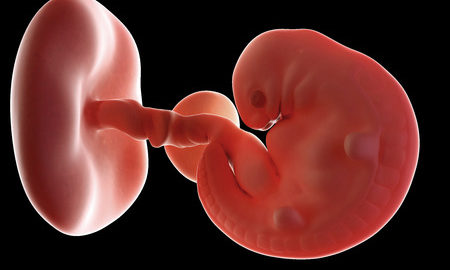Debate Continues on Embryonic Stem Cells

One of the biggest scientific debates of the current century has been whether it is ethical to use embryonic stem cells to treat human disease. It has even played a role in presidential politics, right up there with terrorism, immigration, and abortion.
Humans, like all multicellular organisms, have certain cells in their bodies called stem cells. These stem cells can differentiate into all the different types of cells and tissues that are found in the human body. A stem cell can, therefore, metamorphose into heart, lung, brain, or liver tissue. These stem cells, called pluripotent stem cells, have been of great interest to the scientific community because of their ability to become different types of tissues in various organ systems of the body.
Researchers realize the immense potential of pluripotent stem cells. They can possibly cure Alzheimer’s and Parkinson’s, reverse paralysis, and treat heart disease. They are the panacea for human suffering. About a decade ago, pluripotent stem cells could only be obtained from a human embryo. This meant conceiving an embryo in a test tube and then killing it. This made pro-life advocates go up in arms about a process they consider an unethical destruction of human life.
In 2001, President George W. Bush placed a moratorium and restricted federal funding for any research on stem cells derived from human embryos. This sparked vigorous protests from across the aisle. The move was condemned as not only anti-scientific, but regressive and reminiscent of dark-age superstitions. The media, cartoonists, and liberal politicians had a field day lampooning Bush.
In 2006, Nobel-Prize winner Shinya Yamanaka of Japan pioneered a technique to induce pluripotency. This means that adult stem cells can essentially mimic the actions of embryonic stem cells. Using this technique, researchers at the Massachusetts General Hospital in Boston succeeded in growing a beating human heart from skin cells. This method produces genetically-compatible tissue and eliminates the risk of rejection because the newly-grown tissue is the patient’s own.
When President Obama assumed office in 2009, he quickly lifted the moratorium and embryonic stem cell research got a new lease of life. In the meantime, the development of somatic or “adult” stem cells has put the debate to rest, at least to some degree. These stem cells reside in specific areas called stem cell niches in different tissues in the body such as bone marrow, brain, skeletal muscle, teeth, skin, heart, liver, gut, ovaries, and testis. These undifferentiated cells distributed throughout the body can replenish dying and diseased cells by multiplying through cell division. Somatic stem cells have been used to treat a range of conditions including baldness, blindness, arthritis, diabetes, and cancer.
Nonetheless, the debate continues on embryonic stem cells as the government continues to fund important research in this field. Pro-life activists continue to raise concern while researchers working with these stem cells say the promise to find cures for diseases like multiple sclerosis, genetic disorders, and spinal cord injuries simply cannot be ignored.
References:
- http://www.lifenews.com/2016/09/26/remember-the-huge-embryonic-stem-cell-research-debate-turns-out-the-pro-life-side-was-right/&gws_rd=cr&ei=geTpV_7DF4SAvwS1jLuYCg


